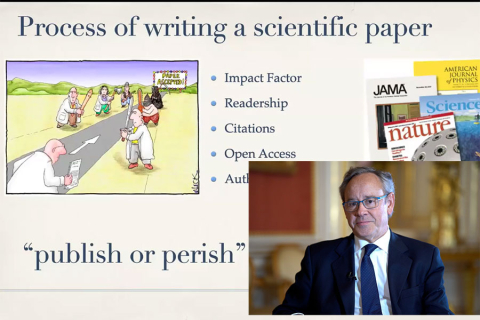And Professor Sanz knows what he's talking about, as he serves on the editorial board of more than a dozen prestigious journals, including the Journal of Clinical Periodontology and the Journal of Periodontology, and has authored and co-authored 514 scientific publications.
During the lecture, he shared his knowledge and experience on how to choose journals for publication As well as how a paper should be structured and its various elements. He also discussed the features of academic writing, pointed out what and what not to publish, and how to prepare for writing.
Selecting a journal for publication
The most important tip: you should decide only on one - the right one for the topic of your work - journal. When choosing it, ask yourself the following questions: whether it is peer-reviewed, who its audience is, how long it takes for the article to appear in print. Impact Factor and readership should also be considered.
- Is the point of writing a paper to get it published, or is it to get your research results widely distributed and read? The more readers you have, the more citations you will get - explained Professor Sanz.
The speaker warned against so-called salami publications, i.e. dividing research results into “slices” and publishing each of them separately to increase the total number of publications.
- The essence of knowledge transfer is to bring together questions and answers, from different perspectives, in one place - the professor said.
About academic writing
This was an important part of the lecture. Prof. Mariano Sanz asked not to forget that the language of science is different from literary language. And when writing a scientific publication, one must take into account its rules.
- If you write fiction, your perspective is very subjective, imagined. When you write about science, your perspective must be objective, based on facts. Subjectivism must be eliminated.
So how should a scientific publication be written? The content should be comprehensive, clear, complete, rigorous. Perspective should be objective and factual. The language should be clean, devoid of ornamentation, formal.
- In science, the content must be clear and interpreted in only one way. It must be scientific truth - stressed Prof. Sanz.
Prof. Sanz's lecture was full of many other valuable tips, such as how to write an introduction to convince readers that the author knows perfectly well why his work is useful, and how to present research results without interpreting them.
The lecture, entitled “How to write a scientific paper,” was held on June 12. Prof. Mariano Sanz spoke for the MUW audience at the invitation of Prof. Paweł Włodarski, Vice Rector for International Relations, Development and Promotion. The lecture was organized by the MUW Doctoral School within the framework of STER Internationalization of NAWA Doctoral Schools program.
